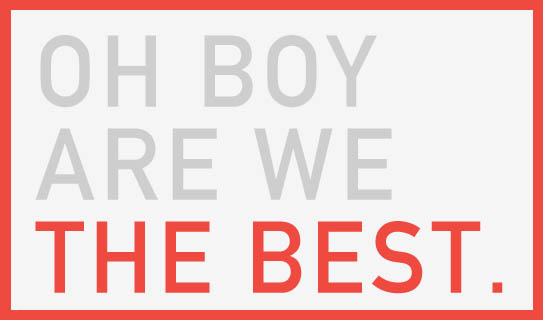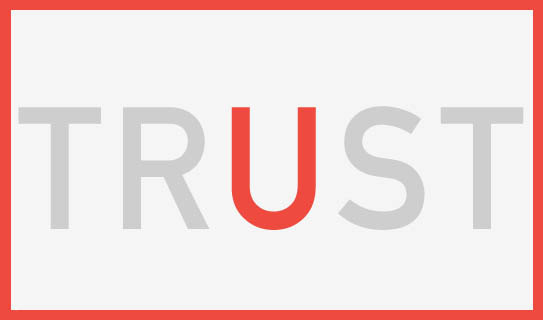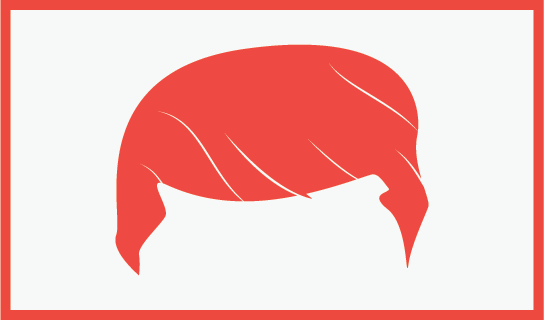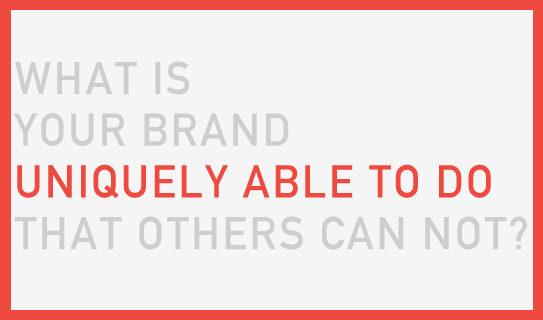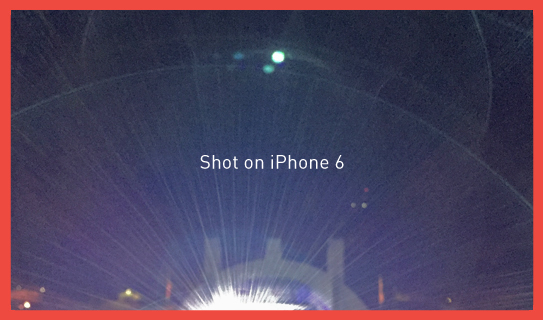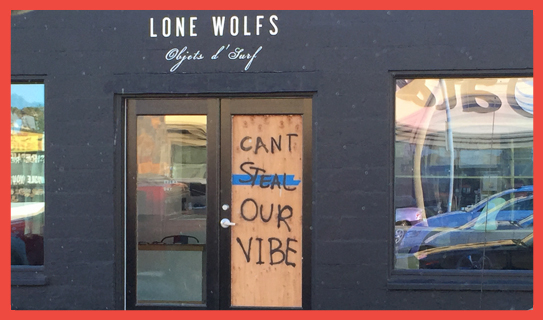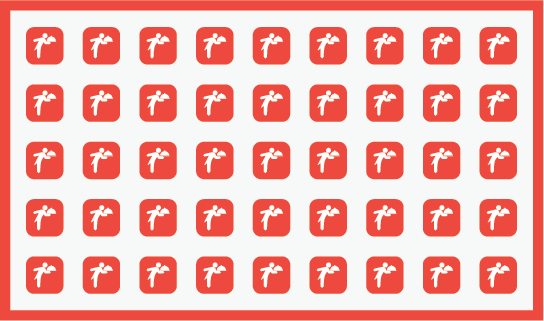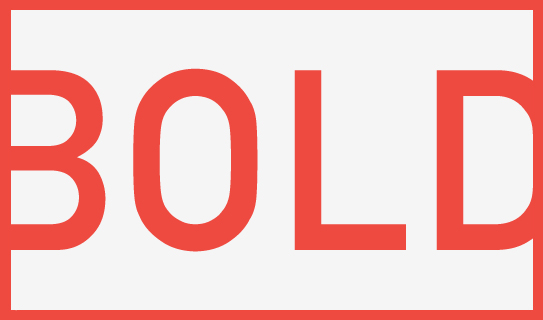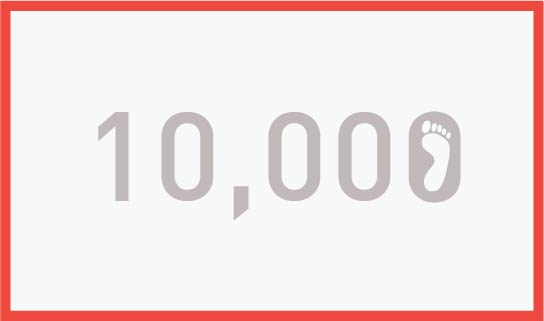Author Archives: Fabian Geyrhalter
Why The ‘Best Brand’ Name Is Not The Best Option For Your Product Launch
Brand Positioning is an art form. It is essential to the success of your venture and it is a topic we have given you plenty of guidance on. Even when it comes to something as important as positioning, just like with most things branding, there are definite fads happening. Recently these dangerous turns in brand positioning have hit actual brand names, which we all know can not change easily over time. That kind of positioning, in a nutshell, sounds something like this: “We are the best. Seriously, we are.” Oh crap! No, you are not. Everyone thinks their product is the best, but the market will tell you if in fact you are the best. You don’t tell the market that, the market tells you that. It seems like a no-brainer, something no branding expert needs to call out, especially given the joined consensus of the next generation of buyers (to avoid the M-word) that believe in inclusivity, honesty and modesty. Yet we have seen a flood of new brands positioning themselves as being the best through their actual brand names over the past years. In doing so, there is no turning back for them and their ‘strategic’ cockiness. Especially in the snack food arena, ‘greatness’ in name positioning has overwhelmed the market place. Here’s a sampling of four such brands that I ran into at the market the other day: Despite their often superior ingredients, and sometimes great taste (sometimes the opposite), naming a new product ‘way better,’ ‘perfect,’ ‘epic,’ or ‘the best in the world,’ …
How to Trust Your Decisions as a Startup Founder
This post has not much to do with branding, but it is a topic that I know a lot of startup founders are secretly struggling with, regardless of age, and it puts a huge bump into their road to success. Let’s change that. I run a brand consultancy that advises new ventures on a distinct and definite brand direction to take. We name new ventures – from any vertical – that don’t have a single customer yet. We create a fictitious target audience and we craft a name to work for them. A name that will soon be used by thousands of actual customers worldwide. We do not use focus groups, instead we base the direction on brand strategy and insights we craft and collect during the process. If the name works within our criteria we go for it and there is no turning back. Referencing Henry Ford’s famous quote – “If I had asked people what they wanted, they would have said faster horses” – most focus groups will pick the safe option, the option that feels most familiar, an option that may not look into the future enough to have the biggest impact (For more on that, see my thoughts on TopGolf). The minute I let go of questioning my decision, of needing proof of concept, bigger and more innovative ideas keep emerging and my clients get just as energized as myself by the opportunity to do big thinking that will immediately be implemented into their brand strategy and subsequent …
3 Brand Lessons to ‘Trump’ Them All
There is something very sincere we can learn from ‘The Donald.’ This article was originally published as part of my column in Inc. A long time ago, I made a promise to myself that I wouldn’t ever touch upon politics in my writing. I broke my rule back in February when I was interviewed by The Washington Post on Hillary Clinton’s brand, comparing its legacy to that of McDonald’s. I sure broke my rule nicely. So here I go, breaking all my rules in one sentence, yet again: There is something very sincere we can learn from Mr. Donald Trump. Before you hit the comments field in rage, let me explain. ‘The Donald’ is quintessential branding in the making, and we can all witness it live, night after night. I recently came back to Los Angeles from a three-week European vacation. As I left the U.S. for my trip, I started worrying that Trump would become the center of every conversation I’d have with friends and strangers alike. From answering the ‘Do Americans really like him?,’ the ‘Could he really become President of the United States?’ and, of course, the most dreaded, ‘What do you think’? In the end, the conversation only came up once, and instead of my expected response, I found myself somewhat defending the idea that is Trump. I was shocked. It turns out I am actually fascinated by the Trump persona and brand, even though politically and intellectually I would like to remove myself rather far from …
‘This Black Friday, We’re Closing All Our 143 Stores’
See grain. Go against it. In a wonderful promotion that goes straight to the heart of its brand, outdoors consumer product brand REI (Recreational Equipment Inc) decided to remain closed this Black Friday. It will instead pay its employees to spend the day outside. An idea that is so nuts for a big retailer, that will lose important revenue on the biggest revenue generating day of the year, that would never go past any Board of Directors or Shareholders…that it makes for the perfect promotion for REI to pull off. That is the question I always ask startups as I help define their brand strategy. What is it that makes you so unique and how can you leverage your uniqueness to gain hearts? REI is a co-op. It is owned by its members, its shoppers, by all of us. If anyone, they are uniquely able to ‘#optoutside.’ A genius move that goes deep into the heart of the outdoors brand and its loyal audience: “While the rest of the world is fighting it out in the aisles, we hope to see you in the great outdoors.” Opt Outside. The revenue that they will (likely) lose that day, they are gaining in lifelong, renewed, love by its members. A love that is worth every penny (used solely as a metaphor) of their Black Friday losses. Money can’t buy what this strategy will give back to their brand. What is your takeaway? Well, what is your startup uniquely able to do? Define and follow it to …
How Your New Brand Can Connect With An Audience Like A Pop Song
I saw the 90’s Britpop band Blur at the Hollywood Bowl last night (If you don’t recall them, I captured a few pivotal seconds for you). It seemed as though they were as surprised to be on stage as were the fans seeing them tour. It was rather special. Not that I am a fan by any means – I was always leaning towards Oasis. Furthermore I belong to the 1% that appreciate their latest work more than their hits, which made watching a 90’s hit band and their fans solely interacting based on their hits a rather interesting experience. Fans went nuts and sang along word for word to songs that were really not all that great. There was a feverish sparkle in their eyes. They were filled with joy. There may have been some tears. It was a spectacle watching the spectators. None of this was about the band at all. It wasn’t about the songs that stuck with them since adolescence. Maybe it was about colorful cassette tapes and the smell of vinyl records, about cool band t-shirts and cherished ex-boyfriends. It was indeed about the memories the audience associated with the songs, about the times they were listening to Blur all the time. It was all about them, not about the band that they cheered for. Everyone celebrated moments they once had, and together they added a new moment to it. Life, as we know, is about a collection of moments after all. Remember the Kodak Moment? Today it is Shot on iPhone …
Can’t Steal Our Vibe
A little while ago I was driving through Venice (California) and noticed a surf shop that must have recently gotten broken into. I was mesmerized and quickly snapped a picture out of the car: To me these 4 simple words so masterfully describe how we help our clients derive their company’s true soul. What we are really doing is determining the ‘vibe’. A vibe that you can fully embody and that others can fully embrace. A vibe that one day turns into your norm and that you spread with ease. A vibe that if competitors come in, they can no longer simply steal. That vibe is how Keith Moon played the drums or how Craig Kelly surfed the snow. There have been plenty of amazing drummers and snowboarders, but they can’t touch that style, that vibe. How poppin makes receiving a stapler in the mail exciting? It’s their vibe. That vibe is the foundation to their brand. “Can’t Steal Our Vibe.” Street culture poetry that every company transitioning into a brand can learn from. If all fails, if all gets stolen, what does your brand still own? What is that foundation that you can rebuild upon with ease, because it is based on passion and emotions and not products and numbers?
The ‘Concierge For The Masses’ Movement And Your Logo: 3 Ways To Partake Instead Of Being Left Unnoticed
Taking an Uber to my meeting I decide to stop on the way for coffee. 5 minutes ahead I use the Starbucks app to place my order. The app knows what I like, so creating my ‘warm’ double-tall-nonfat cappuccino with extra foam is a matter of one single tap. Rinse will swing by tonight to pick up my dry-cleaning for the week. By that time my living room furniture from Greycork should have arrived. All of it. I will assemble it without tools in 4 minutes, just before the dinner ingredients arrive at my door step. It’ll take me 10 minutes to make my farm-to-table dinner with Gobble tonight. My wife will be impressed. Welcome to today. Slowly we adapt to a new way of doing things, and rather quickly are we getting used to it. Automation is the norm. Tech startups introduced us to what I dub ‘concierge service for the masses’. What used to be a luxury, is now expected. What used to be ‘disruption’, is now advancement. Today we have very long brand memories of very short brand experiences. Those experiences are being supported by the icon we tapped, the actions we took, and the visual brand language that supported us along the way. Todays’ brands are built on the interaction of experience and flawless design. The first touchpoint more than ever is the logo/icon, which in many cases you simply tap to start your journey with a brand. How much brand design remains with us after …
How to Build Your Retail Brand on a 4-Letter Word Only You Can Own
I recently had a brand consultation call (via Clarity) with a fashion accessory startup from Singapore working on a convincing new product that perfectly fits into a niche yet also has the opportunity to take over it completely. If they ever get that far. The startup needs to go head-to-head with the largest players in the space in order to succeed; a space where big brand names are key to morphing indecisive shoppers into on-the-spot buyers. I saw their value proposition after talking with them for ten minutes, but how will they ensure to get noticed in split seconds? Are consumers willing to pay the same for a new no-name brand as they would for the time-tested brand names one wants to be seen sporting? Heading towards major competition, I had one advice for her going into a saturated B2C/Retail market: Be BOLD The big players can be sexy, smooth, sophisticated, glamorous, heck…they can be anything money can buy. Bigger displays, more massive campaigns, bigger celebrity endorsements, stupendous photo shoots. There’s one thing only you can, and they can’t: You can be BOLD. It is a 4-letter word, and you can own many more of those if you’d like – and not in the fabricated manner FCUK did. Words others can only hesitantly type, you can actually be. They may go bold on a marketing campaign, but your brand can launch being bold – with an immense amount of attitude and moxie. You can shout. You can be loud. It might be the only way you’ll get noticed. Look at your …
How Subliminal And Hidden Design Messages Can Boost Brand Engagement
This article was first published via Mashable. A handful of brands keep their loyal advocates excited and engaged by using hidden design language to tell the bigger stories in a highly visual, yet subliminal manner. And that is exactly why we are drawn to them: We seek to be “in-the-know.” Secretive design language is widely used on web sites as “Easter eggs,” within products as hidden features, as hidden offerings by food providers (In’N’Out’s secret menu or Bible citations on the packaging, for example) and even on passports as security enhancements, like Norway’s next passport design. Utilizing design secrets to share underlying themes is a powerful brand statement — one that helps gain buzz and keeps believers lining up for more. Very much like the speakeasy that has no sign out front and is incredibly hard to find, we are attracted to brands that challenge us intellectually and hide elements from plain sight. Seeing and connecting them makes us feel special, and that is one wonderful feeling that a brand can trigger within their audience. Here are two ways your brand can turn to the subliminal to get its audience engaged. Opportunity 1: Let Your Brand Identity Speak Through Design Brand identities, or simply ‘logos,’ are the most common place to find hidden messages and deeper meaning at the very top of the visual brand pyramid. The arrow between the letters ‘E’ and ‘x’ in the FedEx logotype is the go-to example for subliminal messaging in logotypes, but you can find them …
10,000 Easy Steps to Entrepreneurial Success
The key to entrepreneurial success lies at your doorstep I have to admit, I was hesitant to share below thoughts with you as they do not relate to your branding pain points, nor are they utilizing my core expertise. Yet it presents advice dear to my heart. We read a lot about the steps it takes to be a successful entrepreneur. They revolve around networking, innovation, perseverance, collaboration, seizing opportunities, and on and on goes the list. A list of advice you and I both often get trapped in – or so I assume – since we are heading towards the same goal of being a great entrepreneur, regardless if you are just starting out/up, or if you have been successfully in business for decades. I suggest 10,000 steps to success. Daily. That’s right, 10,000 steps daily, and I mean that literally. Successful entrepreneurs walk. A lot. And not on a treadmill. They walk, because it is their secret weapon for mind and body to be in balance, resulting in a productivity and creativity boost. This is a good thing for every body, but essential for entrepreneurs. When you start walking, two amazing things happen: You are by yourself. You are not in front of a screen nor conversing with others. This leads to your mind having some free time to wander off. You are re-invigorating your body. Mens sana in corpore sano – A sound mind in a sound body. Age old wisdom, we all know it, but we …
